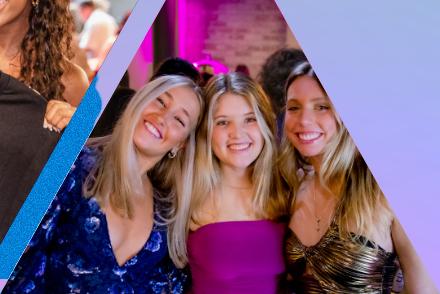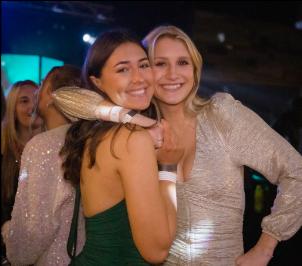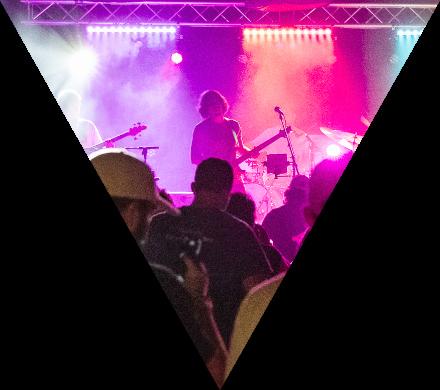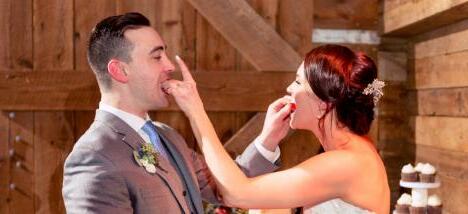
5 minute read
Art Town
From big museums to tiny galleries, art is everywhere in Athens.
lerist Tif Sigfrids first met in Athens when Howard was earning his degree at UGA and Sigfrids was involved in the Athens music scene as a runaway teen. The gallery also features a space titled “The Guest Room” to host New York and Los Angeles art dealers, artists and curators to program.
Advertisement
Tiny ATH Gallery
A new addition to the scene, this pocket-sized space occupies a renovated onetime grocery store at the edge of Pulaski Heights and showcases local artists with a new show every month, accompanied by artist talks and other programming.
Galleries
Ace/Francisco Gallery
This newer gallery located in the historic Leathers Building hosts monthly solo exhibits while supporting Southeast student art organizations. On opening night of each show, a limited edition of prints, signed by the artist, are available for purchase.
Thrasher Photo + Design
With work previously featured in Rolling Stone, New York Magazine, USA Today and The New York Times, Beth and Jason Thrasher built a photography, branding and design business via Thrasher Photo & Design. They recently opened a photo studio in the Leathers Building in downtown Athens available to visit by appointment.
The Athenaeum
UGA’s newest creative space, The Athenaeum features a contemporary gallery room, workspace and reading room of texts and albums to facilitate socialization and discussion around art. Renovated by Katie Geha, the director of the galleries at the Lamar Dodd School of Art, the space hosts educational programming each semester.
Athica
The Athens Institute for Contemporary Art, or ATHICA, is a gallery that hosts exhibits and performances year round. The main location is in the historic Leathers building in Pulaski Heights, while its secondary location is at the Ciné movie theater downtown.
Lyndon House Arts Center
Operated by Athens-Clarke County, this downtown center offers contemporary gallery exhibitions, classes and workshops as well as festivals and events. An annual highlight is the juried showcase of work by local artists. Admission is free to the public.
Tif Sigfrids
Located above Jittery Joe’s downtown location, Tif Sigfrids expanded its New York gallery to Athens. Opening the gallery jointly, painter Ridley Howard and Los Angeles gal-
House Museums
Church-Waddel-Brumby House
Believed to be the oldest home in Athens, this former residence of UGA president Moses Waddel was built in the 1820s and has been meticulously restored. It’s also the home of the Athens Welcome Center.
Taylor-Grady House
Built in the 1840s, the home is named for original owner Robert Taylor, a cotton merchant and planter, and Henry W. Grady, the famed newspaperman, whose father bought the house from Taylor. Grady lived in the house while attending UGA. Now an events venue, it’s in need of a full-time preservation-minded tenant.
T.R.R. Cobb House
The distinctive pink mansion is the former home of Thomas Reade Rootes Cobb, a Georgia lawyer, politician and Confederate brigadier general. The lower level showcases life in the mid 1800s while the upper level holds exhibitions that include more contemporary interpretations of history.
Ware-Lyndon House
The 1840s Ware-Lyndon House is a cityowned house museum Downtown. Next door is the Lyndon House Arts Center, a community visual arts complex that includes galleries and studios.
Museums at UGA
Georgia Museum of Art
Opened in 1948, the state’s official art museum occupies a contemporary building on East Campus. It holds nearly 17,000 objects, including 19th- and 20th-century American paintings, artwork from the Italian Renaissance and a growing collection of Southern decorative arts. See page 54 for more.
Georgia Museum of Natural History
The specimens at the official state museum of natural history include 1.3 million insects, over 325,000 species of fishes and nearly 50,000 reptiles and amphibians. To visit the South Campus museum, schedule a tour; open Tuesday through Thursday.
Lamar Dodd School of Art
Lamar Dodd came to the university as a resident artist, consolidated all visual arts teaching into a single department and enrolled the first visual arts master’s students. At the school on River Road named for him, see emerging and student artists’ work throughout the year.
Performing Arts Center
The Performing Arts Center on East Campus is home to the Hugh Hodgson Concert Hall and the Ramsey Concert Hall, venues that host national and international performers as well as UGA music students and faculty.
Special Collections Libraries
This 115,000-square-foot building on Hull Street holds the Hargrett Rare Book and Manuscript Library, which includes more than 250,000 books about Georgia history, 120,000 rare books and over two centuries of UGA history in the form of publications, artifacts, official records and more. The facility also houses the Richard B. Russell Library for Political Research and Studies and the Walter J. Brown Media Archives and Peabody Awards Collection, which preserves over 250,000 works in film, video, audiotape, transcription disks and other formats.
Public art
Keep your eyes peeled for public works of art around town, from murals to colorful painted fire hydrants, sculptural bus stops and the famous bulldog statues. The latest addition to the art landscape was “Frequency,” unveiled in December, a 14-piece, bright-blue metal sculpture by Eric Leshinsky, inspired by the North Oconee River. It was the last part of the East Clayton Street Improvements Project, which also widened sidewalks, improved landscaping, painted rainbow crosswalks, and repaved streets.

Q&A Stephanie Raines

Arts Administrator of the Arts Division Administration Office of Athens-Clarke County
Athens is home to a collaborative, creative art scene. Artists young and old come together to share works that reflect upon their personal and collective experiences. The Red & Black sat down with arts administrator Stephanie Raines and discussed the importance of public art and where visitors can experience these works.
What is the best part about your job?

I am actually a native Athenian, but I’ve worked all over. I was in Savannah for 10 years prior to coming to this job, at SCAD, and then at Telfair Museums. I’ve been working mostly in visual arts, so working in performing arts has been exciting and fun to learn about. I think theater and dance, something that I didn’t have as much background in but I do now, [has given me] a much deeper appreciation for it.



What kind of public art spaces should people visit in Athens?

The Lyndon House Arts Center is really fantastic. It’s a huge, beautiful building with art all throughout the space. Artists are actually in there working. We have a studio membership program, and anyone can join for $65 a month and [work with] ceramics, the photography dark room, printmaking, painting, jewelry and woodworking.
What makes the Athens art scene so important to its history?
Local artists are attractive for people coming to visit here. There’s always going to be some interesting people who have a weird puppet company on the side, that are also in a band and maybe also work at this restaurant. And so you’re just meeting them in all these different places. This has long been the kind of place where people wanted to make work with other people. And I think some of that comes from the way that bands are largely made up of groups, so people have to coordinate, collaborate and share space and resources.









What are your favorite pieces?

I think the Rainbow Forest [on the Oconee River Greenway] is a really cool destination piece. We’ve seen a lot of people come just to see that work of art, everyone from curators to videographers, so I think it’s great to spend a day on the Greenway taking a nice long walk…I also really love the piano outside the library… you never know who you’re gonna see sit down and make beautiful music from what is a public space, and it’s painted by local artists.
Why do you advocate for art?

I want people to care about artists and respect them because they bring a lot to the economy and to the culture. They make Athens a really great place to live. We should respect them and thank them for that. Artists make great neighbors and friends. They don’t just bring us beauty, but they also help us find meaning. And sometimes artists help us process complex ideas, as well as help us reflect on difficult times. Many of the works that I’ve seen, [that are] really poignant, are around the experiences that we’ve all collectively had.”
Interview by Elizabeth Rymarev









